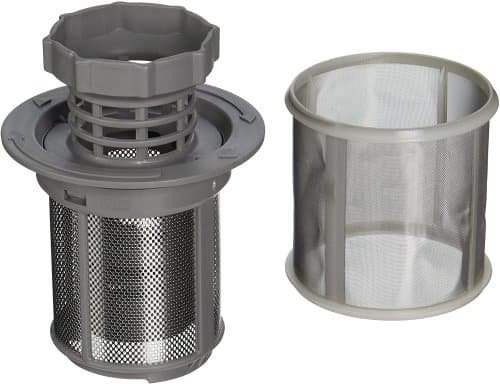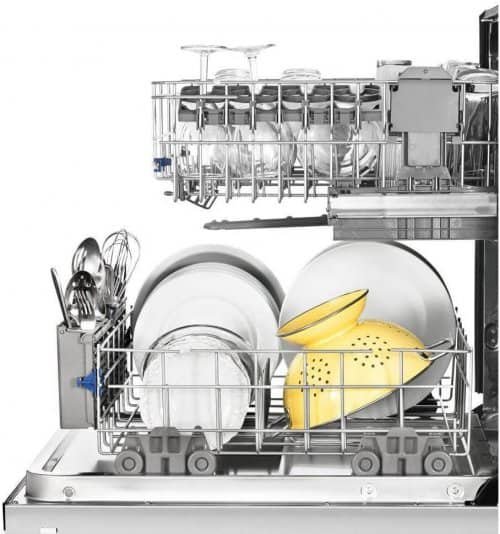Having a clean and hygienic dishwasher is essential for ensuring that your dishes come out sparkling clean and free from harmful bacteria. Regular maintenance and disinfection of your dishwasher can prevent unpleasant odors and the buildup of grime. In this article, we will provide you with a step-by-step guide on how to disinfect your dishwasher effectively.
Table of Contents
Why is it important to disinfect your dishwasher?
Disinfecting your dishwasher is crucial for maintaining a healthy and safe kitchen environment. Over time, food particles, grease, and soap scum can accumulate inside the dishwasher, creating a breeding ground for bacteria and mold. This can result in foul odors, unsanitary conditions, and potentially contaminate your dishes with harmful microorganisms. By disinfecting your dishwasher regularly, you can eliminate these issues and ensure that your dishes are not only clean but also safe for use.
Gather the necessary supplies
Before you begin the disinfection process, gather the following supplies:
- Rubber gloves
- Vinegar
- Baking soda
- Dish soap
- Soft-bristle brush
- Microfiber cloth

Step 1: Safety precautions
Start by wearing rubber gloves to protect your hands from any harsh chemicals or debris present in the dishwasher.
Step 2: Clean the exterior
Using a microfiber cloth and mild dish soap, wipe down the exterior of the dishwasher to remove any dirt or stains. Pay attention to the control panel, buttons, and handles.
Step 3: Remove and clean the filter
Locate the dishwasher’s filter, usually found at the bottom of the tub, and remove it. Rinse the filter under warm water to remove food particles and debris. Use a soft-bristle brush if necessary to scrub away stubborn residue. Once clean, reinsert the filter back into its place.

Step 4: Clean the spray arms
Check the spray arms for any blockages or clogs. Use a toothpick or a small brush to remove any debris that might hinder the water flow. This ensures that your dishes are thoroughly cleaned during each cycle.

Step 5: Clean the interior
Inspect the interior walls, racks, and door of the dishwasher for any visible dirt or grime. Wipe them down using a solution of warm water and mild dish soap. Pay close attention to the corners and crevices where buildup is most likely to occur.
Step 6: Disinfect with vinegar
Fill a dishwasher-safe cup or bowl with white vinegar and place it on the top rack of the empty dishwasher. Vinegar acts as a natural disinfectant and helps eliminate any lingering bacteria or odors. Run a hot water cycle without detergent to allow the vinegar to circulate and clean the interior.
Step 7: Run a cleaning cycle
Some dishwashers have a specific cleaning cycle option. If available, select this cycle to ensure a thorough cleaning and disinfection. Follow the manufacturer’s instructions for running the cleaning cycle effectively.
Step 8: Clean the door gasket
The rubber seal around the dishwasher door, known as the gasket, can accumulate dirt and grime. Wipe it down with a damp cloth soaked in a vinegar-water solution to remove any buildup. Be sure to clean both the inner and outer edges of the gasket.
Step 9: Wipe down the control panel
Using a microfiber cloth slightly dampened with water, gently wipe down the control panel and buttons. Avoid using harsh chemicals that may damage the panel.

Step 10: Maintain a clean dishwasher
To keep your dishwasher clean and odor-free, incorporate these maintenance practices:
- Scrape off excess food from dishes before loading them.
- Rinse heavily soiled dishes before placing them in the dishwasher.
- Regularly clean and remove debris from the filter.
- Run a cleaning cycle with vinegar once a month.
How to disinfect dishwasher with vinegar?
Disinfecting your dishwasher with vinegar is a simple and effective way to keep it clean. To do so, you’ll need to run an empty cycle of your dishwasher using hot water and white vinegar. Start by pouring two cups of white vinegar into the bottom of the dishwasher. Then, run the dishwasher on its hottest setting. The combination of heat and vinegar will help to break down any food particles or grease that may have built up in the dishwasher over time.
Once the cycle has finished, you can use a damp cloth or sponge to wipe down the interior walls of the dishwasher. This will help remove any remaining dirt or debris that was loosened up during the cycle. Finally, you can add a few drops of lemon juice to the inside of your dishwasher for added freshness and disinfection.
Following this process regularly should help keep your dishwasher clean and free from germs and bacteria.
How to disinfect dishwasher with bleach?
Disinfecting a dishwasher with bleach is a simple and effective way to get rid of germs and bacteria. To do this, you will need to fill the dishwasher detergent dispenser with 3/4 cup of chlorine bleach and run the dishwasher on its hottest cycle. Make sure that all dishes are removed from the dishwasher before running it. After the cycle is complete, open the door to allow for ventilation and let the machine air out for 15 minutes before closing the door again. This process should be repeated at least once a month to ensure that your dishwasher is properly disinfected.
In addition to running a hot cycle with bleach, it’s also important to regularly clean your dishwasher by wiping down all interior surfaces with an all-purpose cleaner or vinegar solution. This will help keep your dishwasher free of food debris and other contaminants that can cause odors or build-up over time.
How to clean dishwasher without vinegar?
Cleaning a dishwasher without vinegar is possible, but may require a few extra steps and supplies. Start by taking out any dishes or utensils and emptying the dishwasher filter. Then, using a soft cloth, wipe down the interior of the dishwasher to remove any loose debris. Next, fill a bowl with hot water and add 1/2 cup of baking soda to it. Dip your cloth into the bowl and use it to scrub down the interior of the dishwasher, paying special attention to any areas that are stained or discolored. Finally, run an empty cycle on your dishwasher using hot water to rinse away any remaining residue from the baking soda. This should help keep your dishwasher clean and free of odors.
How to clean dishwasher with vinegar and baking soda?
Cleaning your dishwasher with vinegar and baking soda is a quick and easy way to keep it running smoothly.
Start by pouring one cup of white vinegar into the bottom of the dishwasher. Run the dishwasher on its hottest setting for one cycle. This will help to remove any buildup of grease or grime that may have accumulated over time.
Next, sprinkle a half cup of baking soda onto the bottom of the dishwasher and run it again on its hottest setting for another cycle. The baking soda will help to break down any food particles that may be stuck in the crevices and corners.
Finally, use a damp cloth or sponge to wipe away any remaining residue from the interior walls of the dishwasher. This will ensure that all dirt and grime is removed from the surface, leaving your dishwasher sparkling clean!
How to clean dishwasher with baking soda?
Cleaning your dishwasher with baking soda is a simple and effective way to keep it running smoothly. To begin, empty the dishwasher of any dishes or detergent pods and run a cycle of hot water. Once the cycle is complete, sprinkle a cup of baking soda along the bottom of the dishwasher. Then, run another cycle on the hottest setting available. This will help to remove any lingering odors and food particles that may have been left behind. Finally, wipe down the interior of the dishwasher with a damp cloth to remove any remaining residue. With regular maintenance like this, you can ensure your dishwasher runs efficiently for years to come!

Conclusion
A clean and disinfected dishwasher not only ensures hygienic dishes but also prolongs the life of your appliance. By following the step-by-step guide provided in this article, you can easily maintain a clean dishwasher and enjoy spotless results with every wash.
FAQs
1. How often should I disinfect my dishwasher?
Ideally, you should disinfect your dishwasher once a month to prevent the buildup of bacteria and maintain optimal cleanliness.
2. Can I use bleach instead of vinegar to disinfect my dishwasher?
While bleach can be effective for disinfection, it may damage the dishwasher’s components. Vinegar is a safer and more gentle option for regular maintenance.
3. Should I use the dishwasher cleaning tablets for disinfection?
Dishwasher cleaning tablets can be useful for routine maintenance, but they may not provide the same level of disinfection as vinegar. It’s recommended to use vinegar for occasional deep cleaning.
4. Can I use a regular brush to clean the spray arms?
To avoid scratching or damaging the spray arms, it’s best to use a soft-bristle brush specifically designed for dishwasher cleaning.
5. How do I remove stubborn stains from the interior of my dishwasher?
For stubborn stains, make a paste using baking soda and water. Apply the paste to the stained areas, let it sit for a few minutes, then scrub gently with a soft brush or cloth.

